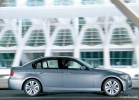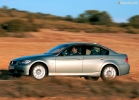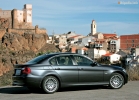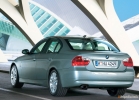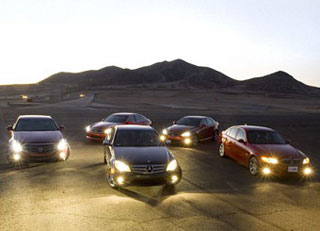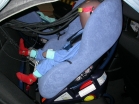Test drive BMW 3 E90 2005 - 2008 sedan
Switching
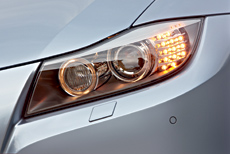 It is always the first to be in everything, at the very tip of progress, not to be followers, but by the creators of advanced design, BMW can easily put its logo under any of these theses. And in our rapid age, this means constant tracking the situation in the market and timely updating of the model rows. Now it's time to pump up the famous three -tire.
It is always the first to be in everything, at the very tip of progress, not to be followers, but by the creators of advanced design, BMW can easily put its logo under any of these theses. And in our rapid age, this means constant tracking the situation in the market and timely updating of the model rows. Now it's time to pump up the famous three -tire. It would seem that the model recently entered the market, but the time to make cosmetic changes has come. In addition, competitors from Audi have already managed to update their four. The Bavarians decided not to take risks, and the result, even without global changes, the 3rd episode has significantly subsided both visually and technologically.
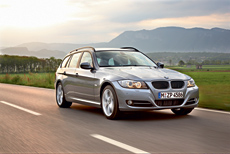 Naturally, both the sedan and the station wagon underwent changes. But let's start in order. First of all, the gamma of the engines expanded. Now the 3rd BMW series is offered with five gasoline and five diesel engines, providing the widest selection of engines in the segment. Both gasoline and diesel options can be selected from two 4-cylinder and three 6-cylinder engines. The power spectrum extends from 143 liters. With. 4-cylinder models BMW 318i and BMW 318D up to 306 liters. With. in-line 6-cylinder power unit BMW 335i. All engines are offered for both the sedan and for the station wagon, and are combined in a specific configuration with the latest BMW EfficientdyMics measures for each model.
Naturally, both the sedan and the station wagon underwent changes. But let's start in order. First of all, the gamma of the engines expanded. Now the 3rd BMW series is offered with five gasoline and five diesel engines, providing the widest selection of engines in the segment. Both gasoline and diesel options can be selected from two 4-cylinder and three 6-cylinder engines. The power spectrum extends from 143 liters. With. 4-cylinder models BMW 318i and BMW 318D up to 306 liters. With. in-line 6-cylinder power unit BMW 335i. All engines are offered for both the sedan and for the station wagon, and are combined in a specific configuration with the latest BMW EfficientdyMics measures for each model. 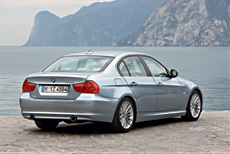 BMW Efficentdynamics is an unprecedented complex of measures to increase the efficiency of power plants. All gasoline engines without exception are equipped with a second generation direct injection. In the system called High Precision Injection (high -precision injection), two piezoforms located in the center between the valves and in the immediate vicinity of the spark plug are injected with accurate dosing. Thus, even in daily operation, a decrease in fuel consumption is ensured that is measured. Four-cylinder engines of the BMW 320i and BMW 318i models, as well as a in-line 6-cylinder unit with a double turbocharged BMW 335i technology, have an aluminum cylinder block. In addition, in the 6-cylinder atmospheric engines the BMW 330i and BMW 325i uses a cylinder block of magnesium and aluminum. This design is about 24 % easier than a similar aluminum block.
BMW Efficentdynamics is an unprecedented complex of measures to increase the efficiency of power plants. All gasoline engines without exception are equipped with a second generation direct injection. In the system called High Precision Injection (high -precision injection), two piezoforms located in the center between the valves and in the immediate vicinity of the spark plug are injected with accurate dosing. Thus, even in daily operation, a decrease in fuel consumption is ensured that is measured. Four-cylinder engines of the BMW 320i and BMW 318i models, as well as a in-line 6-cylinder unit with a double turbocharged BMW 335i technology, have an aluminum cylinder block. In addition, in the 6-cylinder atmospheric engines the BMW 330i and BMW 325i uses a cylinder block of magnesium and aluminum. This design is about 24 % easier than a similar aluminum block.  An aluminum structure that reduces the mass also differs in the BMW diesel engines of the 3rd series. In addition, in 6-cylinder and in 4-cylinder diesel units, fuel is supplied to the cylinders using a third-generation Common Rail direct injection system. Turbanneters with variable geometry at the inlet and the technology of double adjustable turbocharged in the BMW 335D provide sports dynamic characteristics with extremely high efficiency.
An aluminum structure that reduces the mass also differs in the BMW diesel engines of the 3rd series. In addition, in 6-cylinder and in 4-cylinder diesel units, fuel is supplied to the cylinders using a third-generation Common Rail direct injection system. Turbanneters with variable geometry at the inlet and the technology of double adjustable turbocharged in the BMW 335D provide sports dynamic characteristics with extremely high efficiency. In standard configuration, all options for the new BMW 3 series are equipped with a 6-speed mechanical gearbox. In the basic version, the BMW 335D torque is transmitted by a 6-speed automatic gearbox to the rear wheels. This gearbox for all other options is offered as an option. For the first time, it became affordable for the new BMW 318D.
 In 1985, the first all -wheel drive model BMW: BMW 325IX appeared on the market. Since then, the value of the BMW XDRive system in the line of models of the BMW 3 series has been constantly growing. Full-wheel drive is offered for a sedan, station wagon and a BMW coupe of the 3rd series. For the first time for this BMW series, it is possible to equip a 4-cylinder model with an intellectual all-wheel drive.
In 1985, the first all -wheel drive model BMW: BMW 325IX appeared on the market. Since then, the value of the BMW XDRive system in the line of models of the BMW 3 series has been constantly growing. Full-wheel drive is offered for a sedan, station wagon and a BMW coupe of the 3rd series. For the first time for this BMW series, it is possible to equip a 4-cylinder model with an intellectual all-wheel drive. The electronic-controlled system of the constant all-wheel drive BMW XDRive due to the appropriate situation by the distribution of torque between the front and rear wheels on any coating provides a unique level of comfort, traction and maneuverability.
 The BMW XDRive system is called intellectual all -wheel drive because it using a handout with an electron -regulated multi -disc clowing in accordance with the current situation with an accurate dosage constantly directs a torque, the wheels of which have the best contact with the road. At the same time, the system reacts exclusively and quickly to any change in the movement situation. Under normal conditions, the BMW XDRive distributes the torque between the front and the rear axles in the proportion of 40:60. At the same time, the sensors constantly measure the slipping of the front and rear wheels. The system is capable of changing the distribution of torque in a fraction of a second. At the same time, unlike the traditional BMW XDRive drive systems, it reacts with a lead and only if one of the wheels begins to slip. As a result, the stability of the car is restored earlier than the driver is aware of the need for actions.
The BMW XDRive system is called intellectual all -wheel drive because it using a handout with an electron -regulated multi -disc clowing in accordance with the current situation with an accurate dosage constantly directs a torque, the wheels of which have the best contact with the road. At the same time, the system reacts exclusively and quickly to any change in the movement situation. Under normal conditions, the BMW XDRive distributes the torque between the front and the rear axles in the proportion of 40:60. At the same time, the sensors constantly measure the slipping of the front and rear wheels. The system is capable of changing the distribution of torque in a fraction of a second. At the same time, unlike the traditional BMW XDRive drive systems, it reacts with a lead and only if one of the wheels begins to slip. As a result, the stability of the car is restored earlier than the driver is aware of the need for actions. 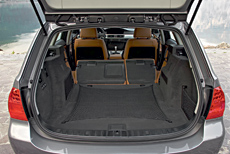 For particularly accurate control, the processors of the DSC dynamic stability system and the XDRive all -wheel drive are combined into the integral control system of the running part of the Integrated Chassis Management (ICM). The high -performance electronic control system allows you to mutually adapt the functions of the drive and the chassis in the fraction of seconds so that in any situation, maximum stability and the highest dynamic characteristics are ensured. Even with a sudden change in conditions, for example, when changing the nature of the coating, fast turning, sharp acceleration or braking, the ICM system reacts with rapid effects on the actuators of DSC and XDRIVE, as well as as an active steering option. In this case, the type and size of the intervention is constantly regulated in such a way that, along with stability, the maximum possible level of dynamics is ensured.
For particularly accurate control, the processors of the DSC dynamic stability system and the XDRive all -wheel drive are combined into the integral control system of the running part of the Integrated Chassis Management (ICM). The high -performance electronic control system allows you to mutually adapt the functions of the drive and the chassis in the fraction of seconds so that in any situation, maximum stability and the highest dynamic characteristics are ensured. Even with a sudden change in conditions, for example, when changing the nature of the coating, fast turning, sharp acceleration or braking, the ICM system reacts with rapid effects on the actuators of DSC and XDRIVE, as well as as an active steering option. In this case, the type and size of the intervention is constantly regulated in such a way that, along with stability, the maximum possible level of dynamics is ensured. Targeted changes in design, sophisticated interior design, a new generation of the BMW IDRIVE optional control system, new BMW ConnectedDrive system services, the processed gamut of engines, as well as innovation in the field of drive technology, safety and comfort have made new sedan and universal of the BMW of the 3rd series more attractive, than ever.
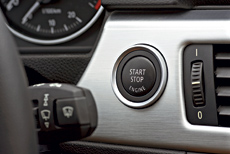
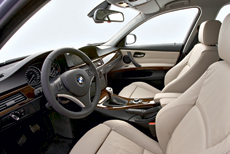

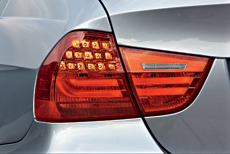
Video Crash Tesses BMW 3 Episode E90 2005 - 2008
Test drives BMW 3 series E90 2005 - 2008
Crash Test BMW 3 series E90 2005 - 2008
Krassh Test: Detailed Information35%
Driver and passengers
4%
Pedestrians
39%
Children-passengers

